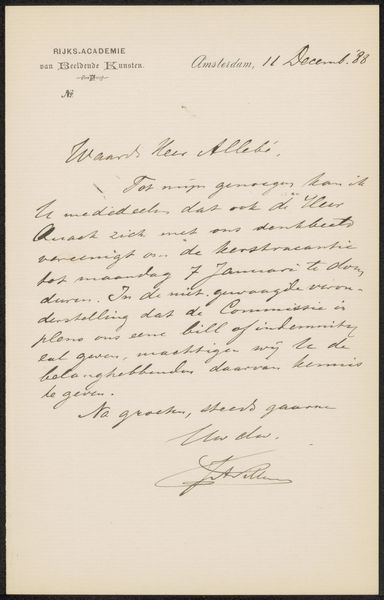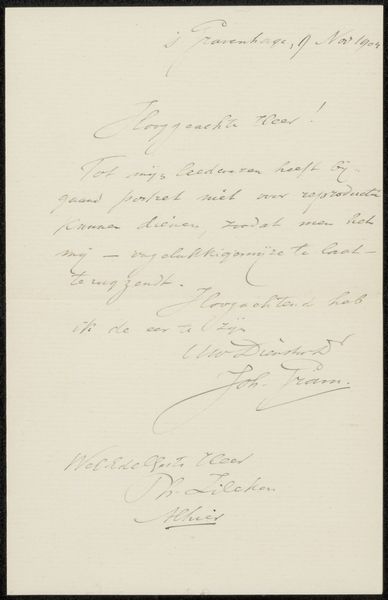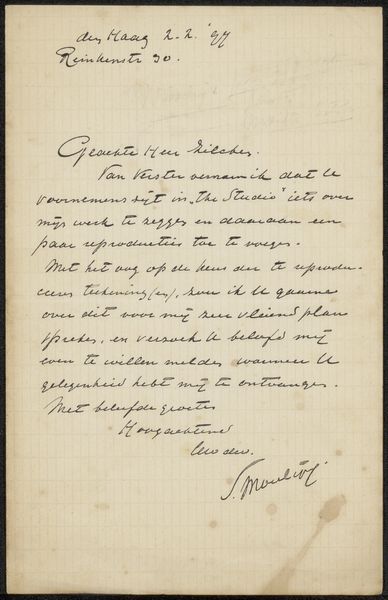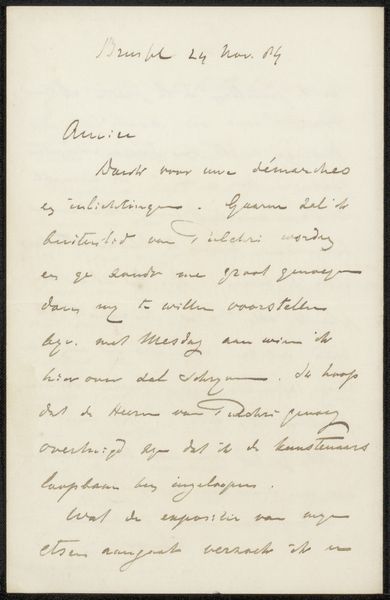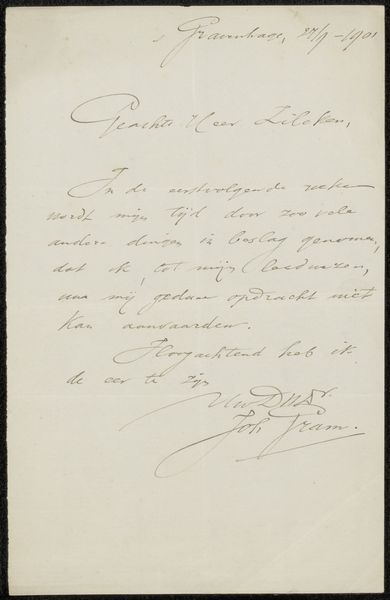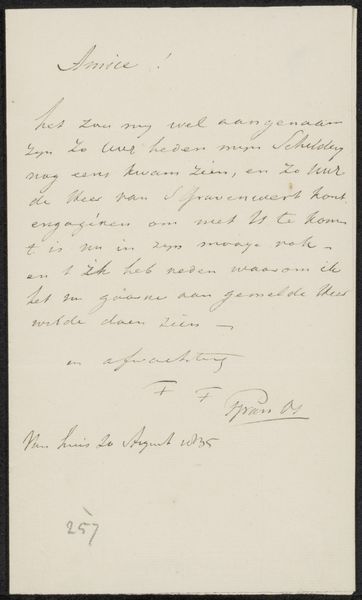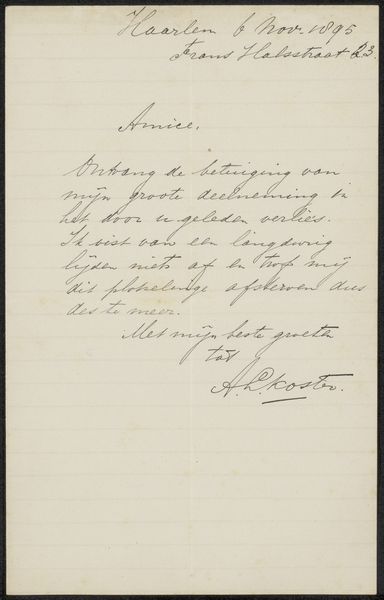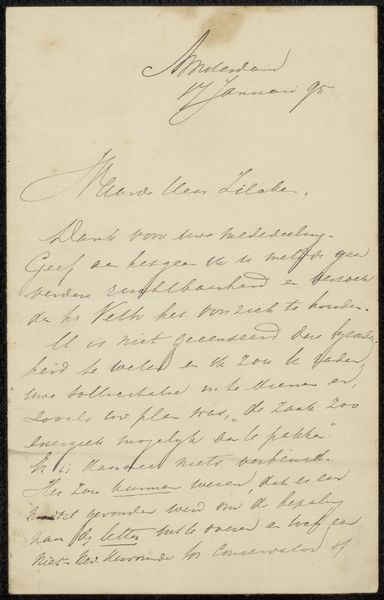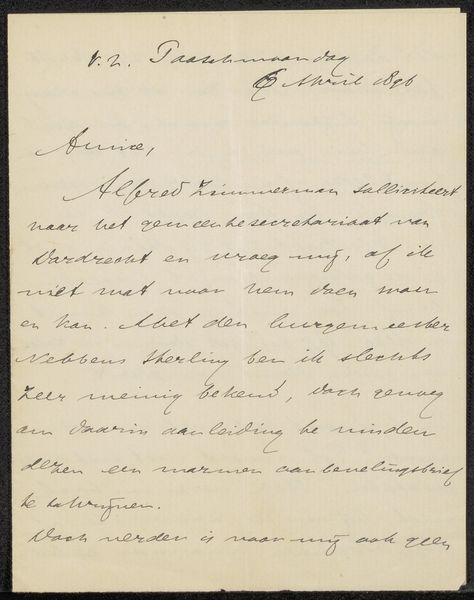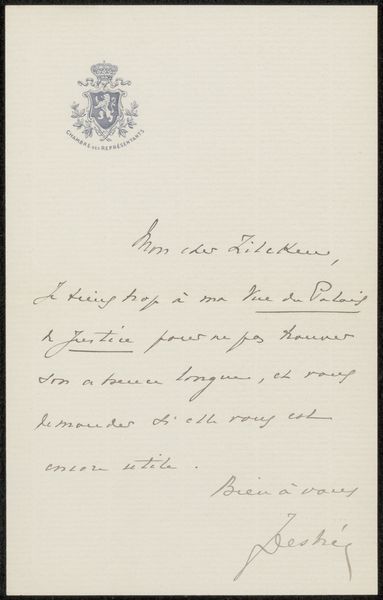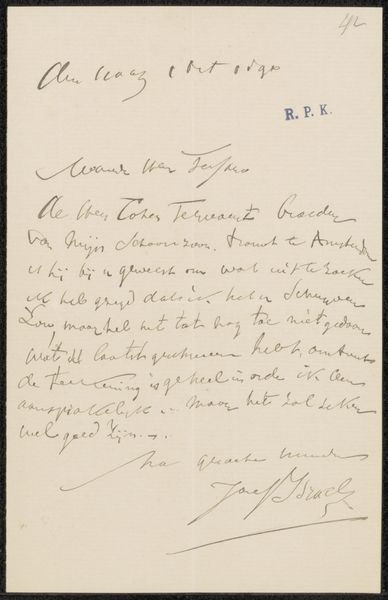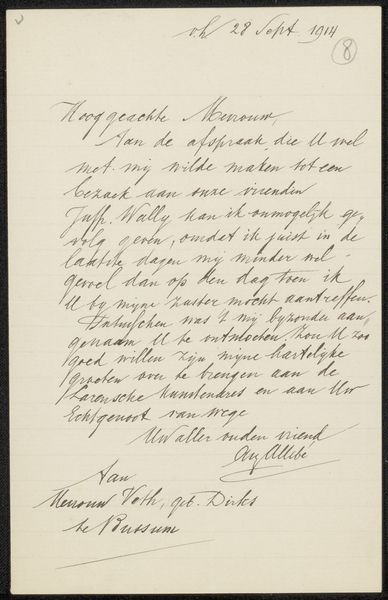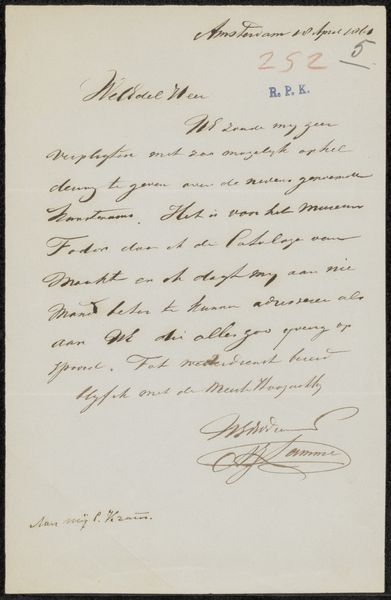
drawing, ink, pen
#
drawing
#
pen drawing
#
pen illustration
#
pen sketch
#
ink
#
ink drawing experimentation
#
pen work
#
pen
#
academic-art
#
calligraphy
Copyright: Rijks Museum: Open Domain
Curator: This calligraphic work, seemingly titled "Brief aan August Allebé," and dating back to possibly 1889, offers a fascinating glimpse into academic artistic correspondence. Immediately, I'm drawn to its elegance and the subtle variations in pressure, creating such dynamic lines. Editor: The script itself, a very specific style, dictates the movement and even feeling of the image; I am immediately struck by a sense of formality, even constraint, that the linework embodies. What strikes you about its possible context? Curator: Well, situated within the Rijksakademie van Beeldende Kunsten, and written in what appears to be Dutch, this "brief" hints at artistic discourse within a very specific academic setting. Letters, especially at this time, become crucial artifacts in understanding not only personal relationships but also intellectual exchanges between artists. The social context surrounding these interactions reveals much about artistic influence, the validation of artistic practice and power dynamics within art institutions. Editor: The very texture of ink on paper carries a symbolic weight here, doesn't it? Each stroke embodies artistic skill and careful control. And this balance—almost perfect symmetry of the lettering—reflects, I believe, the formal considerations within art academies at the time, the training, technique and philosophy, all made manifest in how meticulously formed and spaced those letterforms are. Curator: Absolutely. This wasn’t just writing, it was also performance of identity, in a world dominated by class and patriarchal expectations, it was especially difficult for certain identities. Someone with social constraints might carefully control their outward appearance, and correspondence may function as a safe channel for some private and more candid thought, or equally perhaps not, they may also play up their adherence to class constraints for greater ease in some societal transactions and social mobility. This could well be evidence of just such considerations. Editor: In studying a document like this, we gain so much insight into visual communication, as well as the relationship of an individual, with his institute. Ultimately, analyzing the formal properties offers us entry into wider networks of artistic expression and thinking from that era. Curator: And locating these artworks and artifacts in their historical and societal context allows for greater understanding of that art's influence within our current and always transforming culture.
Comments
No comments
Be the first to comment and join the conversation on the ultimate creative platform.
